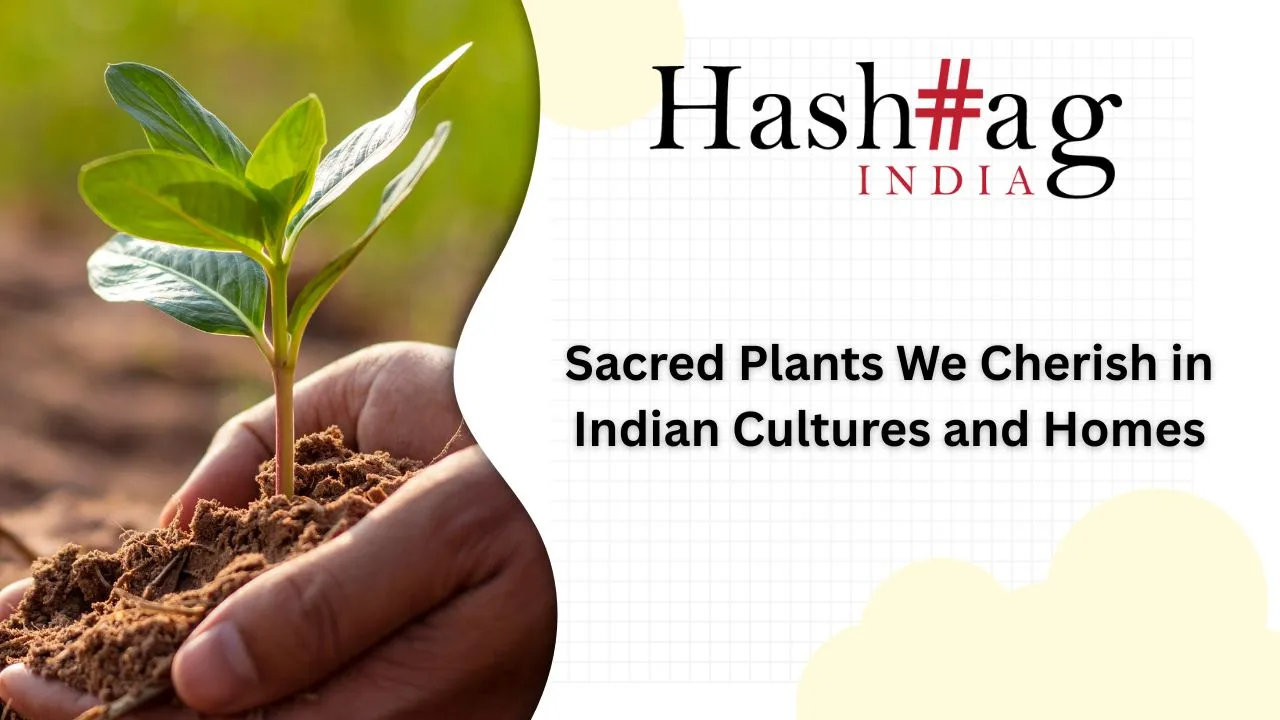In the vibrant tapestry of Indian culture, the line between nature and the divine is beautifully blurred. Plants are not merely flora, they are revered as living manifestations of gods and goddesses, acting as conduits of peace, prosperity, and spiritual purity right within our homes and communities.
While the ubiquitous Tulsi often takes center stage, a closer look reveals a whole ecosystem of sacred plants, each with a profound story, a religious connection, and a practical use woven into the daily lives of millions. Dhanush Kumar writes about the six green deities that hold an irreplaceable spot in the Indian spiritual and cultural landscape.
Tulsi
The Holy Basil, or Tulsi, is arguably the most essential plant in a Hindu Household. It is traditionally grown on a special pedestal, the Tulsi Vrindavan, in the central courtyard. Tulsi is considered an earthly manifestation of the Goddess Lakshmi, the consort of Lord Vishnu.
No worship of Vishnu or Krishna is complete without a Tulsi leaf. The plant is worshipped daily, especially by women, and the annual festival of Tulsi Vivah celebrates her ceremonial marriage to Lord Vishnu. It is also known as the Queen of Herbs, its leaves are a staple in Ayurvedic medicine for treating colds, coughs, and boosting immunity.
The Peepal
Few trees command as much reverence as the majestic Peepal, also known as the Bodhi Tree. It is believed to be the abode of the Trimurti, Lord Brahma (The roots), Lord Vishnu (in the Trunk), and Lord Shiva (in the leaves), Gautama Buddha attained enlightenment under this very species. Devotees perform parikrama and offer water, often tying sacred threats to seek blessings for longevity and to mitigate planetary woes.
The Peepal is one of the few trees that releases oxygen both day and night, embodying its sacred association with the life-giving force.
The Banyan
The Banyan is an emblem of immortality and resilience, serving as India’s National Tree. With its ever-expanding canopy and aerial roots, it symbolizes eternal life and the divine creator, Brahma. It is often compared to the mythological Kalpavriksha, the wish-fulfilling tree. The Banyan is central to the festival of Vat Savitri Vrat, where married women fast, and pray for the longevity of their husbands.
It is revered as the Ashwatha Vriksha (Tree of wisdom) and traditionally served as the natural gathering place for community and learning.
The Bael
The Bael or Wood Apple tree holds a profound, singular connection to Lord Shiva. Its distinctive trifoliate leaves are considered a representation of the Trinetra of Lord Shiva. Offering Bael Leaves is an essential act of devotion. During the festival of Maha Shivaratri, Bael leaves are an indispensable offering to the Shiva Linga, symbolizing purification and the removal of sins.
The Bael fruit, pulp and leaves are highly valued in Ayurveda for their benefits, particularly for digestive health, linking physical health to spiritual practice.
Neem
The humble but powerful Neem tree is celebrated as much for its life-saving properties as its spiritual connection. Neem is often associated with the goddess Sitala Mata, the deity of health and protection from illness. Neem branches are hung over doorways during festivals like Ugadi to ward off sickness. The tree is also integral to various purification rituals.
Nearly every part of the Neem tree is used in traditional medicine, as an anti-fungal, anti-bacterial, and anti-inflammatory agent, earning it the name Nature’s Pharmacy.
Lotus
While not a household plant in the same way, the Lotus is a vital symbol in Indian art, mythology, and worship. The Lotus symbolizes purity, spiritual awakening, and detachment, as it grows from the mud but remains spotless and untouched. Goddess Lakshmi, and Goddess Sarswati are often depicted seated upon or holding a lotus. The flower is used in almost all rituals, and its iconography is central to Yoga, where the Padmasana is a fundamental posture for meditation.
It represents the birth of the Universe, emerging from the navel of Lord Vishnu.
These six sacred plants teach us a timeless lesson; respect for nature is inseparable from devotion. By planting, nurturing, and honoring those botanical giants and humble herbs, Indian culture creates a living temple right in the backyard. This reverence ensures the plant’s preservation, recognizing that they not only sustain our bodies and purify our air but also nourish our souls and connect us to the timeless flow of the divine.





























